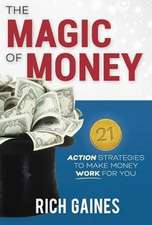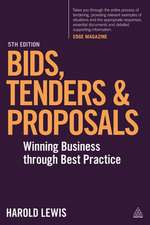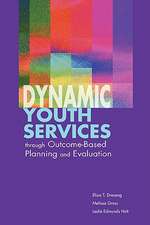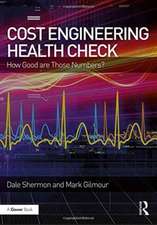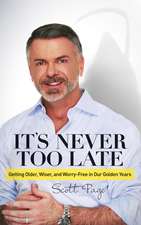Crash Course in Library Budgeting and Finance: Crash Course
Autor Leslie Edmonds Holten Limba Engleză Paperback – 21 aug 2016 – vârsta până la 17 ani
Din seria Crash Course
- 5%
 Preț: 167.80 lei
Preț: 167.80 lei - 18%
 Preț: 264.69 lei
Preț: 264.69 lei - 22%
 Preț: 259.07 lei
Preț: 259.07 lei - 21%
 Preț: 262.54 lei
Preț: 262.54 lei - 22%
 Preț: 258.96 lei
Preț: 258.96 lei - 22%
 Preț: 259.34 lei
Preț: 259.34 lei - 18%
 Preț: 264.99 lei
Preț: 264.99 lei - 22%
 Preț: 258.89 lei
Preț: 258.89 lei - 22%
 Preț: 257.97 lei
Preț: 257.97 lei - 21%
 Preț: 263.48 lei
Preț: 263.48 lei - 22%
 Preț: 259.07 lei
Preț: 259.07 lei - 33%
 Preț: 198.22 lei
Preț: 198.22 lei - 22%
 Preț: 260.25 lei
Preț: 260.25 lei - 32%
 Preț: 257.03 lei
Preț: 257.03 lei - 31%
 Preț: 258.42 lei
Preț: 258.42 lei - 31%
 Preț: 259.34 lei
Preț: 259.34 lei - 31%
 Preț: 259.34 lei
Preț: 259.34 lei - 17%
 Preț: 266.00 lei
Preț: 266.00 lei - 17%
 Preț: 268.94 lei
Preț: 268.94 lei - 17%
 Preț: 270.13 lei
Preț: 270.13 lei - 31%
 Preț: 261.08 lei
Preț: 261.08 lei - 18%
 Preț: 265.06 lei
Preț: 265.06 lei - 17%
 Preț: 266.45 lei
Preț: 266.45 lei - 17%
 Preț: 266.00 lei
Preț: 266.00 lei - 17%
 Preț: 266.91 lei
Preț: 266.91 lei - 17%
 Preț: 266.91 lei
Preț: 266.91 lei - 18%
 Preț: 263.69 lei
Preț: 263.69 lei - 18%
 Preț: 265.06 lei
Preț: 265.06 lei - 18%
 Preț: 265.06 lei
Preț: 265.06 lei - 5%
 Preț: 193.57 lei
Preț: 193.57 lei -
 Preț: 204.25 lei
Preț: 204.25 lei -
 Preț: 204.44 lei
Preț: 204.44 lei -
 Preț: 204.44 lei
Preț: 204.44 lei -
 Preț: 204.44 lei
Preț: 204.44 lei -
 Preț: 58.35 lei
Preț: 58.35 lei
Preț: 269.20 lei
Preț vechi: 323.98 lei
-17% Nou
Puncte Express: 404
Preț estimativ în valută:
51.51€ • 53.93$ • 42.62£
51.51€ • 53.93$ • 42.62£
Carte tipărită la comandă
Livrare economică 05-19 aprilie
Preluare comenzi: 021 569.72.76
Specificații
ISBN-13: 9781440834745
ISBN-10: 1440834741
Pagini: 218
Dimensiuni: 216 x 279 x 12 mm
Greutate: 0.61 kg
Editura: Bloomsbury Publishing
Colecția Libraries Unlimited
Seria Crash Course
Locul publicării:New York, United States
ISBN-10: 1440834741
Pagini: 218
Dimensiuni: 216 x 279 x 12 mm
Greutate: 0.61 kg
Editura: Bloomsbury Publishing
Colecția Libraries Unlimited
Seria Crash Course
Locul publicării:New York, United States
Caracteristici
Presents information relevant to library administrators in all types of libraries, staff who work with budgets, library finance and budget officers, library board or governance officers, and library foundation managers and grant writers
Notă biografică
Glen E. Holt, PhD, consults as a policymaking and planning consultant for historical societies, foundations, libraries, museums, and private-sector companies.Leslie Edmonds Holt, PhD, is president and CEO of Holt Consulting.
Cuprins
IllustrationsSection I: IntroductionChapter 1-Introduction to Library MoneyWhat Are Your Professional Goals?Adaptation Always Involves Financial Change-and MoneyAction Issue FocusMaking Money the Library's ServantConnect Accounting Language to Library Finance and WorkChapter 2-Financial Literacy in the United StatesAmerican Money KnowledgeLimited Knowledge of Financial IssuesChapter 3-Financial Aliteracy of LibrariansWhat Librarians Say They Don't Know about FinanceLibrarian Scholars Agree with These Self-PerceptionsWhy Librarians Need to Be Financially LiterateDearth in Financial Training for LibrariansChapter 4-The National Economy and Library ContinuityLibrary Development, 1929-1960sFederal Grants for LibrariesNew Funding: Gates Foundation Grants and E-RatePublic Library InquiryDemand for Evaluation (Measurable Outcomes)Continuity in Library FinancesSection II: Building Financial Infrastructure for Your LibraryChapter 5-Electronic Communications: How Computers Are Changing Library FinancePaper and ComputersRecords ManagementAgile Computing in Library FinanceChapter 6-Legal Context: Basic Rules You Need to KnowFederal Income Tax StatusIRS 501 (C)(3) Internal Revenue Service ClassificationIRS 509 ClassificationForm 990AGovernment Accounting Standards BoardFinancial Accounting Standards BoardAccountabilityChapter 7-Professional AdviceAccountantLegal CounselAuditorInsurance AgentFundraising/Communications ConsultantInvestments/Income ManagementReal Estate AgentConstructionEstablish an Appropriate Banking RelationshipSection III: Strategic Financial PlanningChapter 8-Annual Report as a Starting PointWhere to Begin Financial Planning?Elements of the Good Annual ReportChapter 9-Purpose Documents as a Starting Point for Financial PlanningVision StatementMission Statements and TaglinesSection IV: Budget BasicsChapter 10-Budget PlanningTypes of BudgetsChapter 11-Basic Library Budget LanguageWhat's Different about Library BudgetsDouble-Entry Bookkeeping-Chart of AccountsBudget CategoriesBudget Is an Authorization DocumentBudget ExamplesCapital Improvement BudgetDebt Service FundFinancial TermsSection V: IncomeChapter 12-Shifts in Library Service Demands and IncomeWhat Americans Want from LibrariesPublic Funding Has Not Kept Up with Library Service PossibilitiesChapter 13-Primary Sources of IncomeChapter 14-Ways to Increase FundingBudget AdjustmentsGaining or Protecting the Library's Tax-Exempt StatusIncrease Revenue by Passing a ReferendumLegislative Action/Government GrantsFoundation GrantsChapter 15-FundraisingWhy People GiveFundraising TipsAn Example of a Donor RequestChapter 16-Other Sources of DonationsPartnerships with Other AgenciesPlanned GivingEndowmentsChapter 17-Earned IncomeCharging for Library ServiceEarned Income-ExamplesEarned Income IssuesSection VI: Spending and ExpensesChapter 18-Dispelling Financial MythologiesCommonplace Financial MythologiesOther Examples of Financial MythbustingThe Bottom LineChapter 19-Purchasing: Your Part in Spending Library FundsPurchasing ControlsInsurance Liability, Directors, and Officers InsurancePractical Application of Spending PoliciesSumming Up Your Responsibilities: Help Legitimate Library ExpendituresChapter 20-Staff CostsAll Libraries Are Staff IntensiveLibrary Staffing Is Changing Dramatically and Will Require More Sophisticated Accounting to Control CostsWages and BenefitsTypes of CompensationItems in Library Payroll Records1099 Information Return RequirementsThe Importance of Payroll RecordsPayroll Audit of a Public LibraryLibrary Labor UnionsSchool Librarians and Media Specialists: Special Financial ProblemsBudget Tools for Controlling Staff CostsTraining CostsStaffing Patterns Are Changing DramaticallyControlling Staff ExpensesChapter 21-Capital ExpensesFinancial Management of Library ConstructionAmericans with Disabilities Act Standards for Accessible DesignGreen Leadership in Energy or Environmental Design Certified LibrariesRules for Success in Capital Improvements and the Construction ZoneChapter 22-Acquisition of MaterialsVendorsLibrary Expenditures by TypeCostsChapter 23-Other ExpensesSpecial ProjectsEndowments and BequestsThe Mobile Library FleetReal EstateShort TermSecurityBanking/Money ManagementBuilding Maintenance and Cleaning ServicesComputers and Information SystemsEmployee FundsContract ServicesSection VII: Assessment and EvaluationChapter 24-Evaluating the BudgetIn-House Budget EvaluationThe AuditEconomic Measures of Library SuccessOutcome MeasurementEvaluation ImplementationConclusionSection VIII: Communication about MoneyChapter 25-Communicating Library Financial PrinciplesThe Library Is AccountableThe Library Operates Using Professional Accounting StandardsThe Library Budget Is Not Mysterious But PublicLibrary Income and Spending Reported at Scheduled TimesLibraries Operate Financially within Public Laws and Policies, Including the Annual AuditThe Library Invests Money within a Public Investment PolicyConflict of Interest PolicyThe Library Practices Ethical Hiring and Promotion Policies within the Context of Affirmative Action LawsPublic Lobbying Is Legal and Appropriate for Library OfficialsYour Library Adds ValueUse Images to Help Users and Supporters See the Library in New WaysUse Electronic Communication to Relate to Library Users and SupportersGlossarySelected BibliographyIndex
Recenzii
This title is very broad in scope and will be an excellent resource for neophytes on rigorous accounting and finance issues. It will be most useful as a resource for smaller libraries where library staff are called on to deal with the nitty-gritty details. This will also be useful to librarians looking to prepare themselves for management and director positions.





